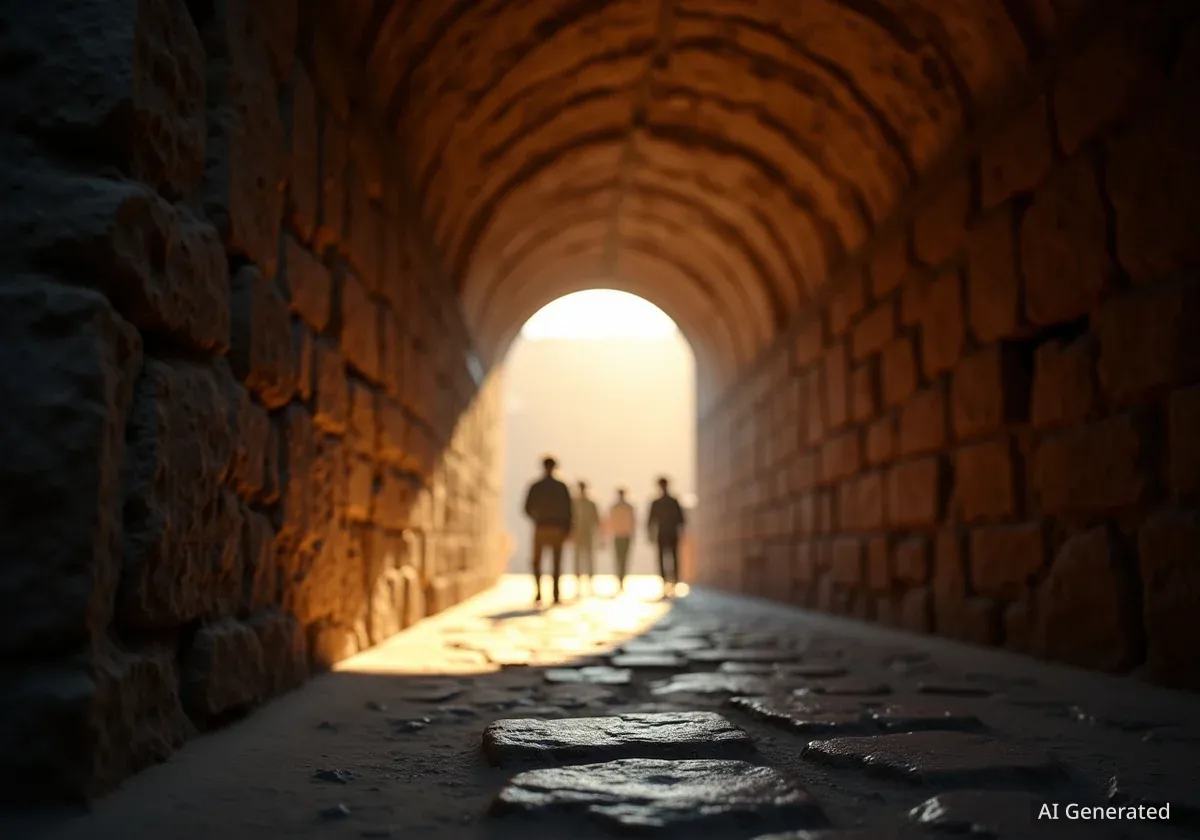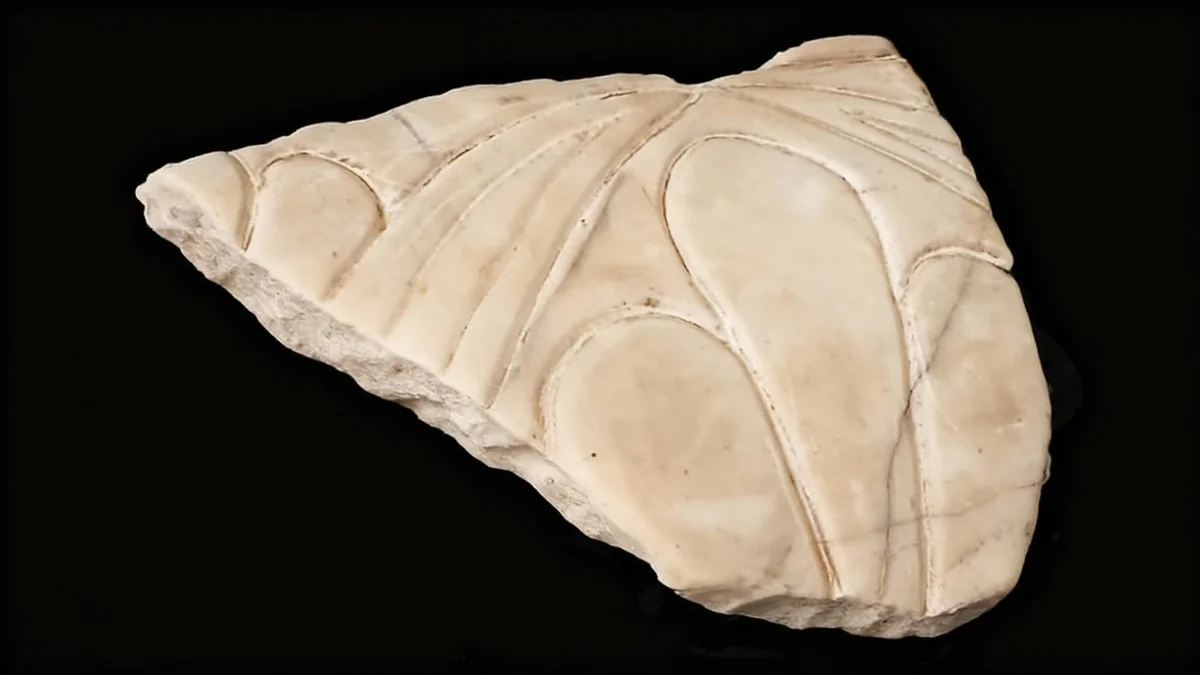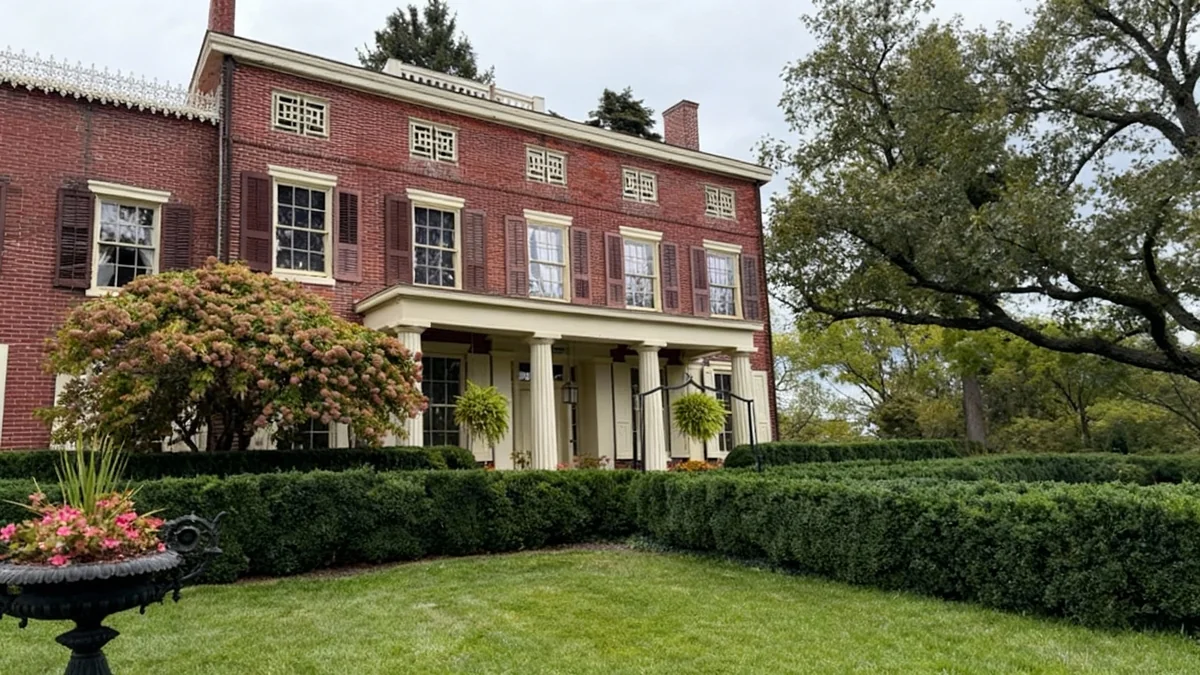A previously inaccessible tunnel used by Roman emperors for discreet passage at the Colosseum is now open to the public for the first time. This subterranean corridor, believed to have been built for security, offered rulers a private route to and from the imperial box, avoiding the large crowds that attended gladiatorial games.
Key Takeaways
- A 55-meter tunnel used by Roman emperors at the Colosseum is now open to visitors.
- The passage was likely built for Emperor Domitian around the end of the 1st century AD for security reasons.
- It features remnants of elaborate decorations, including stucco reliefs of mythological figures.
- The tunnel's original exit is unknown, but experts believe it may have connected to the nearby gladiator barracks.
A New Perspective on Imperial Life
For centuries, the Colosseum has been a symbol of Roman power and public spectacle. Now, visitors can experience a more private side of the amphitheater's history. The opening of this imperial passageway provides a direct look into the security measures and logistical planning required for an emperor's public appearances.
The tunnel begins at the location of the former imperial box on the south side of the arena. From there, it extends beneath the spectator stands and continues underground, offering a glimpse into the hidden infrastructure of the ancient world's most famous entertainment venue.
Alfonsina Russo, the director of the Colosseum Archaeological Park, described the newly restored area. "It’s an extraordinary place and now it has been restored the world will finally get to see it," she said, highlighting the significance of making this historical feature accessible.
Historical Context: The Colosseum
The Colosseum, officially known as the Flavian Amphitheatre, opened in AD 80. It could hold an estimated 50,000 to 80,000 spectators and was used for gladiatorial contests, public spectacles, animal hunts, and mock sea battles. The emperor's presence was a central part of these events, making his safe entry and exit a major concern.
Architectural and Artistic Details
The tunnel was not part of the Colosseum's original construction. It was added later by excavating through the structure's massive 13-meter-thick foundations, which are made of concrete mixed with volcanic rock. This difficult engineering feat suggests its construction was a high priority for a powerful figure.
"To get that dug meant someone who was really important really wanted it," noted Angelica Pujia, a restorer who worked on the project. The effort involved demonstrates the importance placed on the emperor's security and convenience.
Remnants of Lavish Decoration
Despite centuries of decay, traces of the tunnel's original opulence remain. Faded stucco reliefs on the walls and ceiling depict scenes related to the arena's events. Visitors can see images of acrobats evading wild animals and a depiction of the god Dionysus. "You can still see Dionysus’ six pack," Pujia pointed out, referring to the visible details on the ancient artwork.
The walls were once covered in marble, which was later replaced with plaster. According to Pujia, this change was likely a practical one. "That is probably to let the walls breath due to the damp problem caused by the water course running under the Colosseum," she explained. This underground stream, once used to flood the arena for naval battles, still flows beneath the site today.
Live Restoration Work
Some sections of the stucco reliefs are still undergoing restoration. The project has been structured to allow the first visitors to observe the meticulous work of the conservation team in progress, offering a unique look into the process of preserving ancient art.
The Tunnel's Purpose and Destination
Archaeological evidence, including date stamps on bricks, suggests the tunnel was constructed during the reign of Emperor Domitian, who ruled from AD 81 to AD 96. Historians note that Domitian was known for his paranoia and fear of assassination, which may have motivated the creation of a secure, private corridor.
"The Colosseum was a very political place, there could be trouble and Domitian was afraid of being attacked, so he may have ordered the tunnel built."
While the entrance from the imperial box is clear, the tunnel's final destination remains a mystery. The preserved section measures 55 meters before coming to an abrupt end where modern sewer lines were installed a century ago, destroying the remainder of the passage.
However, a sharp turn near the end of the surviving section has led experts to a primary theory. Russo believes the tunnel likely led to the Ludus Magnus, the largest gladiatorial training school and barracks located just east of the Colosseum. "I believe the emperor would go there before the shows to urge the gladiators to fight harder, then use the tunnel to take his seat," she theorized.
The "Tunnel of Commodus" Nickname
The passageway is often referred to as the "Tunnel of Commodus," named after the 2nd-century emperor who was famously attacked at the Colosseum. Commodus, who ruled from AD 177 to AD 192, made many enemies with his erratic behavior, which included fighting in the arena himself against handicapped opponents and exotic animals to ensure victory.
- Historical Figure: Emperor Commodus was known for his megalomania and participation in gladiatorial events.
- Assassination Attempt: An assassination attempt was made against him at the Colosseum, possibly within this very tunnel.
- Ultimate Fate: While he survived the attack at the arena, Commodus was later assassinated in AD 192, strangled by his wrestling partner in his bath. This differs from his death depicted in the 2000 film Gladiator.
The opening of this tunnel adds a new layer to the visitor experience at one of the world's most iconic historical sites. It provides a tangible connection to the political intrigue, security concerns, and daily life of the Roman emperors who once decided the fate of gladiators before a roaring crowd.





